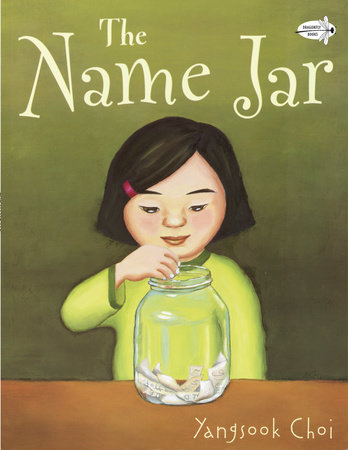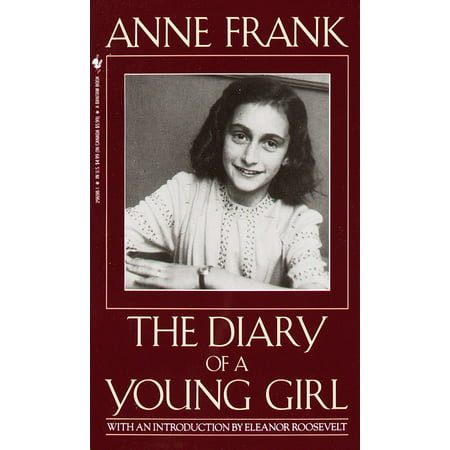Multicultural
Elementary:

The Name Jar by Yangsook Choi
The main character in this book is a girl that just has moved to the United States from Korea. Unhei is nervous about going to school because she knows that none of her classmates will be able to pronounce her name correctly. On her first day of school, she is asked to introduce herself. She tells the class that she will tell them her name next week. All of the students are curious about this so they keep asking her questions. Unhei's peers have a plan to put names in a jar and have her choose one. At the end of the book, she decides that she likes her real name and teaches her classmates how to pronounce it.
Discussion Questions:
1. Why does Unhei choose not to share her name with her class? How does the class react?
2. Why does Unhei's class create the name jar? What is it for?
3. How does she feel about the name jar? How can you tell?
SOL: K.3 The student will build oral communication skills.
d) Listen and speak in informal conversations with peers and adults.
e) Participate in group and partner discussions about various texts and topics.
Activity: This is a perfect book to read at the beginning of the school year or if you have new students throughout the year. It is a great story to celebrate diversity and friendship. At the beginning of the school year, I would have each students name printed on a piece of paper. I would read the story then have the students decorate their name using color pencils, markers, crayons, etc. When they are finished, they can introduce themselves to the class by holding their picture so everyone can see and giving a fact about themselves. I would hang these pictures in the hallway.

The Water Princess by Susan Verde
Gie Gie lives in a place where the water is not close to the village, nor is the water clear. She wakes up every morning before the sunrise to get fresh water for her family. Instead of wearing a crown, she wears a bucket on her head which is used to carry the water back to her village. This book shows the readers what the conditions are like in some places of the world. This book gives hope to the readers that some day there will be clean water around the world.
Discussion Questions:
1. What does Princess Gie Gie's day look like compared to the other women's day?
2. Does Gie Gie feel frustrated that her day is different than the other women's day?
3. How might you feel in the same situation?
SOL: 2.12 The student will write stories, letters, and simple explanations.
a) Generate ideas before writing.
c) Expand writing to include descriptive detail.
Activity: After reading the book, I would have the students draw themselves with Princess Gie Gie and her mother. I would have them write a sentence about how they would feel if they had to do this, and one sentence about what they would say to Gie Gie on the journey to get water.
OR
Have a printable picture of the water bucket they would carry on their head. They would color this how they imagine their bucket would look. Then they would write a sentence about how it feels while they carry it and a sentence about what they would do with the water once they returned home.
Middle:

The Diary of a Young Girl by Anne Frank
This is a diary of the girl Anne Frank who was in hiding for two years. She, her family, and some of their friends were hiding in an annex of a building. This diary informs the readers on what the conditions were like that she was living in and how she felt. After they were captured, Anne was sent to the Bergen-Belsen Concentration Camp where she later died of typhus.
Discussion Questions:
1. What is the significance of the title The Diary of a Young Girl?
2. What do the readers gather about Anne from the gifts she is given on her birthday?
3. What do the items Anne brings to the annex with her reveal about her?
SOL: 7.6 The student will read and demonstrate comprehension of a variety of nonfiction texts.
a) Use prior and background knowledge as a context for new learning.
l) Use reading strategies to monitor comprehension throughout the reading process.
Activity: After the class has finished reading the book, they are to go to http://web.annefrank.org/en/Subsites/Home/ and take a virtual tour of the annex they lived in.

Worst of Friends: Thomas Jefferson, John Adams, and the True Story of an American Feud by Larry Day
Worst of Friends: Thomas Jefferson, John Adams, and The True Story of An American Feud is a true story about Jefferson and Adams. They were friends; however, they had the biggest clash of personalities. When they were deciding how to run the newly United States, they began to become enemies. Their political views followed them to the White House. They eventually became leaders of opposing political parties.
Discussion Questions:
1. What do you think the authors purpose was for this book?
2. Have you ever had an argument with a friend? What did you do to get through it? Does this help you understand the story better?
3. When you disagree with a friend, what do you do to make it better? Do you think that Jefferson and Adams handled it well?
SOL: USI.6 The student will apply social science skills to understand the causes and results of the American Revolution by
a) explaining the issues of dissatisfaction that led to the American Revolution;
c) key events and the roles of key individuals in the American Revolution, with emphasis on George Washington, Benjamin Franklin, Thomas Jefferson, Patrick Henry, and the Marquis de Lafayette.
Activity: After reading the book, the teacher would assign each student a role. They are to bring the story to life throughout a play. They will explain the change in relationship of Jefferson and Adams throughout their lives.
High:

Brown Girl Dreaming by Jacqueline Woodson
Brown Girl Dreaming is a poetry book. The poems in this book are very vivid and show the readers what it was like to grow up as an African American in the 1960s and 1970s. These poems are touching and very powerful with a glimpse into a child's soul as she searches for her place in the world.
Discussion Questions:
1. How is economic class represented in the novel?
2. How does the protagonist's family history affect her identity?
3. How is gender discussed in the novel?
SOL: 10.1 The student will participate in, collaborate in, and report on small-group learning activities.
e) Demonstrate the ability to work effectively with diverse teams to accomplish a common goal.
f) Collaborate with others to exchange ideas, develop new understandings, make decisions, and solve problems.
Activity: After reading the book, the class will watch a video of Jacqueline Woodson reading a poem from the book (https://www.youtube.com/watch?v=b5P3Y06co54&fbclid=IwAR32OTToAPzudh5bXlBphuWPJtcG6VRlPjVr6y9JFbowth5162DN-n7e6zI&app=desktop). Then, the class will each pick two different places to live, preferably like in the story (opposites). Would it be hard to have a "heart in both places"? Would you prefer one over the other. I.E: Mountains vs. Beach. - could you pick a favorite? Discuss in groups, then later discuss as a whole.

Between Shades of Gray by Ruta Sepetys
Lina, the main character in the book, is just like any other fifteen-year-old girl in 1941, only she is Lithuanian. She likes to paint and draw. Just like her friends, she gets crushes on boys, too. One night a Soviet officer barges into her home. The officer tears her family from the only life they've known.
Discussion Questions:
1. What can be inferred about her understanding of the political climate in her country?
2. Lina's mother remains calm throughout the roundup of her family; how does her family benefit from this?
3. How does the author use the embedded flashbacks to help readers understand why Lina's family has been rounded up for punishment? Do you agree with the family's choices? Why or why not?
SOL: 11.7 The student will self- and peer-edit writing for correct grammar, capitalization, punctuation, spelling, sentence structure, and paragraphing.
e) Adjust sentence and paragraph structures for a variety of purposes and audiences.
f) Proofread and edit writing for intended audience and purpose.
Activity: Classroom discussion will consist of comparing and contrasting. What does this theme within the story remind them of? Name and compare both events with each other. Also, discuss what it'd be like to be in Lina's shoes.
When the class has discussed the book, they are to write a one page response for the novel. They could write about one thing they learned, if they would recommend this book, what they liked, or what they did not like.
Return to Multicultural Group Presentations
Comments (0)
You don't have permission to comment on this page.